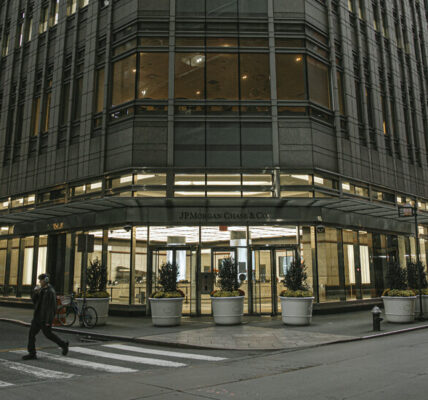The Federal Reserve’s most closely watched inflation measure remained stubborn in March, the latest evidence that price increases are not fading as quickly as policymakers would like, and another reason that interest rates may stay higher for longer.
Investors came into 2024 hopeful that Fed officials would cut rates substantially this year, but those hopes have been fading as inflation has shown much more staying power than expected. Wall Street increasingly sees lower rates coming much later in the year, if the Fed manages to cut them at all.
The latest Personal Consumption Expenditures index reading could keep the Fed on a cautious path as it considers when to lower borrowing costs.
The overall inflation index rose by 2.7 percent in the year through March, up from 2.5 percent in February and slightly more than economists had expected.
Fed officials typically keep a close eye on a measure that strips out food and fuel costs, both of which are volatile, to get a sense of the underlying inflation trend. That “core” measure increased by 2.8 percent on an annual basis, in line with its February reading.
Inflation was coming down steadily in late 2023, but in recent months progress has stalled. That has left policymakers reassessing how soon and how much they might be able to cut borrowing costs. Jerome H. Powell, the Fed chair, signaled last week that central bankers were not seeing the progress that they were hoping to witness before lowering rates.
If inflation continues to hover above the Fed’s 2 percent target, it could prod officials to keep interest rates high for an extended time. Policymakers raised interest rates to 5.33 percent between March 2022 and last summer, and have held them at that level since. They think that is high enough to eventually weigh on the economy — in economics parlance, it is “restrictive.”
But some economists have begun to question just how restrictive it is, because growth has remained solid and hiring rapid even after months of relatively high rates.
Data released Friday showed that momentum continued in March: Consumer spending rose 0.8 percent for the second consecutive month, ahead of forecasters’ expectations. Americans’ after-tax income continued to rise faster than prices.
Given the momentum, some economists are wondering if Fed officials could begin to contemplate raising rates again.
Fed governor Michelle Bowman has already said that while it was not her “base line outlook” she saw “the risk that at a future meeting we may need to increase the policy rate further.”
For now, though, markets have simply pushed back their expectations for rate cuts. Investors are betting that the Fed might make its first move in September or later, based on market pricing, though a growing share think that it may not manage to cut rates at all this year.




